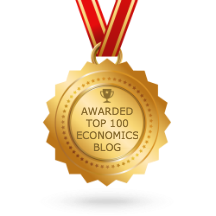Originally posted in 2009.
There was an article in the New York Times recently about how schools
tell prospective students how they are just like Hogwarts. It was Taking the Magic Out of College by By LAUREN EDELSON. Here are some things she mentioned about her visits to colleges:
"[at one school they play] a flightless version of J. K. Rowling’s Quidditch game — broomsticks and all."In the same issue of the NY Times, there was a review of a book by the famous psychologist Carl Jung. The review was titled The Symbologist by KATHRYN HARRISON. The book by Jung is titled THE RED BOOK: Liber Novus. One of the passages from the book was was about Jung's belief in the "deep subliminal connections between individual fantasies and world events."
"So I was surprised when many top colleges delivered the same pitch. It turns out, they’re all a little bit like Hogwarts — the school for witches and wizards in the “Harry Potter” books and movies. Or at least, that’s what the tour guides kept telling me."
"During a Harvard information session, the admissions officer compared the intramural sports competitions there to the Hogwarts House Cup. The tour guide told me that I wouldn’t be able to see the university’s huge freshman dining hall as it was closed for the day, but to just imagine Hogwarts’s Great Hall in its place."
"At Dartmouth, a tour guide ushered my group past a large, wood-paneled room filled with comfortable chairs and mentioned the Hogwarts feel it was known for. At another liberal arts college, I heard that students had voted to name four buildings on campus after the four houses in Hogwarts: Gryffindor, Ravenclaw, Hufflepuff and Slytherin."
"[In] Cornell’s fall 2009 quarterly magazine, [it says] that a college admissions counseling Web site had counted Cornell among the five American colleges that have the most in common with Hogwarts. Both institutions, you see, are conveniently located outside cities. The article ended: “Bring your wand and broomstick, just in case.”"
"I’m not the only one who has noticed this phenomenon. One friend told me about Boston College’s Hogwartsesque library, another of Colby’s “Harry Potter”-themed dinner party. And like me, my friends have no problem with college students across the country running around with broomsticks between their legs, trying to seize tennis balls stuffed into socks (each one dubbed a snitch) that dangle off the backs of track athletes dressed in yellow.""
Mixing fantasy and reality. Sounds like what these colleges and universities are doing by comparing themselves to Hogwart
